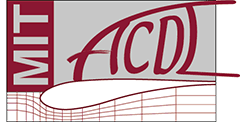Abstract: It is well known that the principle of superposition does not apply to nonlinear systems. One nonlinear solution for one condition is different from another nonlinear solution for another condition, which implies it is difficult to find similarities or scalability between any two nonlinear solutions. In this work, a new finding contradictory and counter-intuitive to this notion is reported about the nature of nonlinear systems. More specifically, basis vectors that span a parametrically rich nonlinear solution space can be obtained such that they are solutions of an equivalent linear system and therefore obey the principle of superposition. These basis functions could lead to a radically new approach to nonlinear analysis that will result in a significant reduction in the complexity of the analysis as well as in computing time. The new scheme is demonstrated using a computational model of a two-dimensional incompressible, viscous flow in which the basis modes are obtained conveniently and quickly from snapshots of frequency responses of the unsteady flow field. It is shown that when used in conjunction with reduced-order modeling they produce very accurate results for a wide range of boundary conditions and Reynolds numbers.
About the Speaker: John Kim worked at the Boeing Company, Seattle, for sixteen years. Prior to this, he was a research associate at Georgia Tech. His areas of specialty are structural dynamics, fluid-structure-control interaction (a.k.a., aeroservoelasticity), system identification and reduced-order modeling of large-scaled dynamic systems, unsteady aerodynamics, and composite structures. At Boeing, he developed innovative computational and experimental tools to enhance accurate and rapid estimation of dynamic loads, flutter and control laws, all of which are essential in design and analysis of modern aircraft structures. In 2003 he was awarded the Best Paper Award at the 5th BTEC (Boeing Technological Conference) for his work on reduced-order aerodynamic and aeroelastic modeling. Since 2005 he has taught the AIAA short course, “Computational Methods in Aeroelasticity” at AIAA Structural Dynamics and Materials Conf., Boeing Ed Wells, National Aerospace Laboratory in Bangalore, India, and NASA Langley. He is an Associate Fellow of American Institute of Aeronautics and Astronautics. In 2013 he joined National University of Singapore in the Department of Mechanical Engineering. He earned his BA from Ajou University, Korea, MS from University of Texas at Austin, and Ph.D. in Aeronautics and Astronautics from Massachusetts Institute of Technology.

